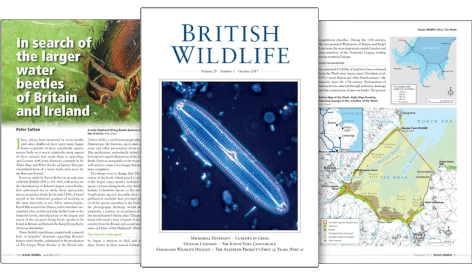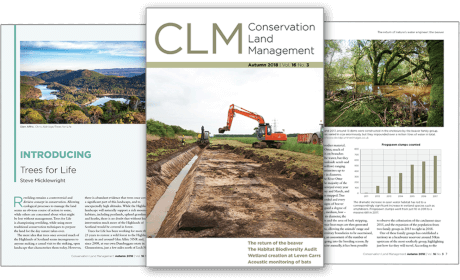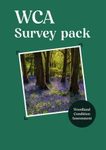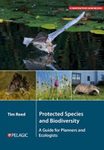About this book
It's been clear for decades that landscape-level patterns and processes, along with the tenets and tools of landscape ecology, are vitally important in understanding wildlife-habitat relationships and sustaining wildlife populations. Today, significant shifts in the spatial scale of extractive, agricultural, ranching, and urban land uses are upon us, making it more important than ever before to connect wildlife management and landscape ecology. Landscape ecologists must understand the constraints that wildlife managers face and be able to use that knowledge to translate their work into more practical applications. Wildlife managers, for their part, can benefit greatly from becoming comfortable with the vocabulary, conceptual processes, and perspectives of landscape ecologists.
In Wildlife Management and Landscapes, the foremost landscape ecology experts and wildlife management specialists come together to discuss the emerging role of landscape concepts in habitat management. Their contributions
- make the case that a landscape perspective is necessary to address management questions
- translate concepts in landscape ecology to wildlife management
- explain why studying some important habitat-wildlife relationships is still inherently difficult
- explore the dynamic and heterogeneous structure of natural systems
- reveal why factors such as soil, hydrology, fire, grazing, and timber harvest lead to uncertainty in management decisions
- explain matching scale between population processes and management
- discuss limitations to management across jurisdictional boundaries and the sometimes competing objectives of private landowners and management agencies
- offer practical ideas for improving communication between professionals
- outline the impediments that limit a full union of landscape ecology and wildlife management
Using concrete examples of modern conservation challenges that range from oil and gas development to agriculture and urbanization, Wildlife Management and Landscapes posits that shifts in conservation funding from a hunter constituent base to other sources will bring a dramatic change in the way we manage wildlife. Explicating the foundational similarity of wildlife management and landscape ecology, Wildlife Management and Landscapes builds crucial bridges between theoretical and practical applications.
Contents
List of Contributors
Foreword
Preface
Acknowledgments
Part I. Understanding Habitat on Landscapes
Chapter 1. The Landscape Perspective in Wildlife and Habitat Management / Chad J. Parent and Fidel Hernández
Chapter 2. Wildlife Management and the Roots of Landscape Ecology / James A. Martin and John M. Yeiser
Chapter 3. Wildlife–Landscape Relationships: A Foundation for Managing Habitats on Landscapes / Michael L. Morrison and William M. Block
Part II. Establishing a Landscape Foundation for Wildlife Managers
Chapter 4. Essential Concepts in Landscape Ecology for Wildlife and Natural Resource Managers / Humberto L. Perotto-Baldivieso
Chapter 5. Using Landscape Ecology to Inform Effective Management / Joseph A. Veech
Chapter 6. Translating Landcover Data Sets into Habitat Features / David D. Diamond and Lee F. Elliott
Chapter 7. Influence of Habitat Loss and Fragmentation on Wildlife Populations / Amanda E. Martin, Joseph R. Bennett, and Lenore Fahrig
Chapter 8. Data Collection and Quantitative Considerations for Studying Pattern–Process Relationships on Landscapes / Jacqueline L. Frair and Guillaume Bastille-Rousseau
Chapter 9. Part II Synthesis: Establishing a Landscape Foundation for Wildlife Managers / David M. Williams
Part III. Establishing a Wildlife Management Foundation for Landscape Ecologists
Chapter 10. Managing Wildlife at Landscape Scales / John W. Connelly and Courtney J. Conway
Chapter 11. Improving Communication between Landscape Ecologists and Managers: Challenges and Opportunities / Kerri T. Vierling, Joseph D. Holbrook, Jocelyn L. Aycrigg, Teresa C. Cohn, and Leona K. Svancara
Chapter 12. Developing Useful Spatially Explicit Habitat Models and Decision-Support Tools for Wildlife Management / Neal D. Niemuth, Michael E. Estey, and Ronald D. Pritchert
Chapter 13. Managing Landscapes and the Importance of Conservation Incentive Programs / Mark J. Witecha and Todd R. Bogenschutz
Chapter 14. Part III Synthesis: Establishing a Wildlife Management Foundation for Landscape Ecologists / David M. Williams
Part IV. Translating Landscape Ecology to Management
Chapter 15. Age, Size, Configuration, and Context: Keys to Habitat Management at All Scales / Jeffrey K. Keller
Chapter 16. A Joint Venture Approach / Gregory J. Soulliere and Mohammed A. Al-Saffar
Chapter 17. Translating Landscape Ecology to Management: A Landscape Conservation Cooperatives Approach / Cynthia A. Jacobson, Amanda L. Sesser, Elsa M. Haubold, Kevin M. Johnson, Kimberly A. Lisgo, Betsy E. Neely, Fiona K. A. Schmiegelow, Stephen C. Torbit, and Greg Wathen
Chapter 18. Mapping Priority Areas for Species Conservation / Casey A. Lott, Jeffery L. Larkin, Darin J. McNeil, Cameron J. Fiss, and Bridgett E. Costanzo
Chapter 19. Nongovernmental Organizations: Their Role in and Approach to Landscape Conservation / Jodi A. Hilty, Karl A. Didier, and Jon P. Beckmann
Chapter 20. Part IV Synthesis: Translating Landscape Ecology to Management / David M. Williams
Index
Customer Reviews
Biography
William F. Porter (1951–2020) was an emeritus professor of wildlife conservation at Michigan State University. Chad J. Parent is a research ecologist at the North Dakota Game and Fish Department. Rosemary A. Stewart is the associate director of Boone and Crockett Programs at Michigan State University. David M. Williams is an assistant professor and the interim director of the Boone and Crockett Quantitative Wildlife Center at Michigan State University.
Contributors:
- Jocelyn L. Aycrigg
- Guillaume Bastille-Rousseau
- Jon P. Beckmann
- Joseph R. Bennett
- William M. Block
- Todd R. Bogenschutz
- Teresa C. Cohn
- John W. Connelly
- Courtney J. Conway
- Bridgett E. Costanzo
- David D. Diamond
- Karl A. Didier
- Lee F. Elliott
- Michael E. Estey
- Lenore Fahrig
- Cameron J. Fiss
- Jacqueline L. Frair
- Elsa M. Haubold
- Fidel Hernández
- Jodi A. Hilty
- Joseph D. Holbrook
- Cynthia A. Jacobson
- Kevin M. Johnson
- Jeffrey K. Keller
- Jeffery L. Larkin
- Kimberly A. Lisgo
- Casey A. Lott
- Amanda E. Martin
- James A. Martin
- Darin J. McNeil
- Michael L. Morrison
- Betsy E. Neely
- Neal D. Niemuth
- Chad J. Parent
- Humberto L. Perotto-Baldivieso
- Ronald D. Pritchert
- Fiona K. A. Schmiegelow
- Amanda L. Sesser
- Gregory J. Soulliere
- Leona K. Svancara
- Stephen C. Torbit
- Joseph A. Veech
- Kerri T. Vierling
- Greg Wathen
- David M. Williams
- Mark J. Witecha
- John M. Yeiser







































